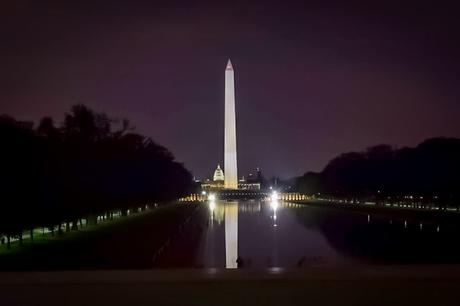In the summer of 2017, I was in Charlestown, WV on business and it occurred to me that Washington D.C. was only a couple of hours away. At the time I was working to develop my photography hobby into a potential career, and D.C. seemed like an excellent place to get some good practice shots. I was currently learning the settings of my first DSLR camera and some entry-level techniques for capturing images. I was no Mike Carano, but as I played with the different functions, I could see a strong potential for continued improvement.
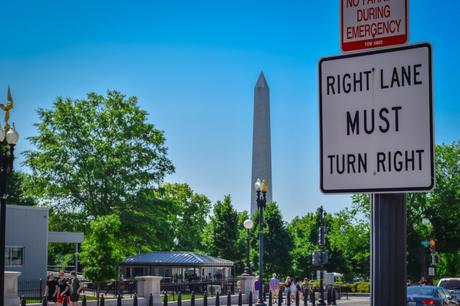
It was 12:15 p.m. when I arrived in Washington D.C. and the battle for parking began immediately. I approached a vacant parking meter only to get cut off at the last moment by a Mercedes with diplomatic plates. Every streetside spot that appeared to be open was restricted. Finally, I was able to leave my car in a garage for the questionable price of $20 and start my tour. This was the first picture that I took once on foot.[/caption]
American Red Cross National Headquarters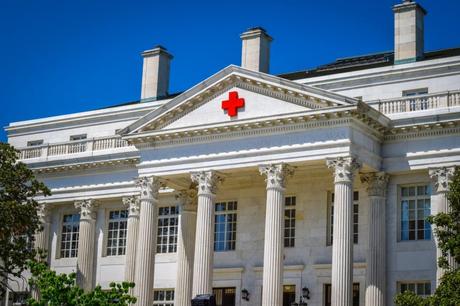
I had never been to Washington D.C., but it was always on my list of places that I'd hoped to visit. It's a city with history and significance that needs no explanation here. Because of that significance, almost every building fascinated me. The American Red Cross National Headquarters stood out as I was walking along 17th St. As an organization, The Red Cross is an excellent example of light and darkness in the same organization. They have saved countless lives with their efforts around the globe, but they also helped to provide new identities to Nazi war criminals defecting to the United States after World War II.[/caption]
George Washington University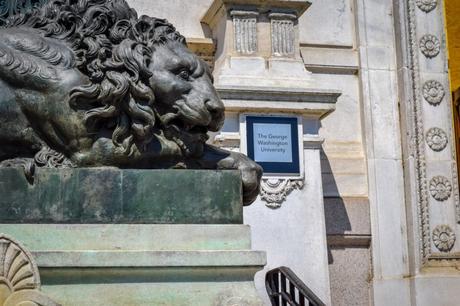
In his first State of the Union address, in 1790, George Washington expressed his vision of a national university in Washington DC. He advocated for it passionately during and after his presidency, and in 1821 a Congressional Act resulted in the founding of Columbian College. After the Civil War, it was renamed Columbian University, and In 1904 the name was changed again to George Washington University. Some of the university's Alumni include Senator Harry Reid, Former Secretary of State Colin Powell, former F.B.I. Director J. Edgar Hoover, and actors Alec Baldwin and Kerry Washington.[/caption]
Washington MonumentThe Washington Monument is visible from most locations in the capital city. At 554 feet tall it is no wonder. From 1884 to 1889 it was the tallest structure in the world, and it still stands as the world's tallest obelisk and predominately stone structure. The monument's construction began on July 4, 1848, but a lack of funds, the Civil War, and other issues kept halting progress.[/caption]
At around 150 feet from the bottom, there is a visible change in the color of the Washington Monument. After construction resumed, following the Civil War, the original bluestone gneiss was unavailable and a finished marble used to complete the structure. On October 9, 1888, after decades of setbacks and contention over materials and design, the Monument was opened to the public.[/caption]
United States Holocaust Memorial Museum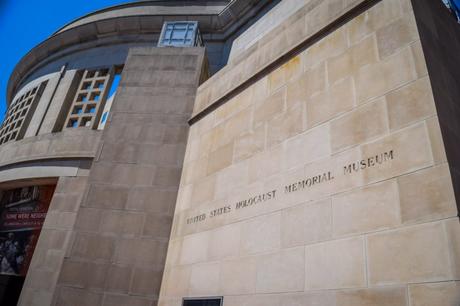
The President's Commission on the Holocaust was established November 1, 1978, by then-President Jimmy Carter and chaired by author and Holocaust survivor Elie Wiesel. Carter tasked the commision with investigating the creation of an appropriate memorial to the victims of the Holocaust, and on September 27, 1979, their report recommended A museum and memorial that would also include an educational foundation and a Committee on Conscience with the objective of helping citizens and leaders around the world confront and prevent hatred and genocide. The United States Holocaust Memorial Museum opened its doors on April 26, 1993, and the first visitor to walk through them was Tenzin Gyatso of Tibet, the 14th Dalai Lama.[/caption]
The White House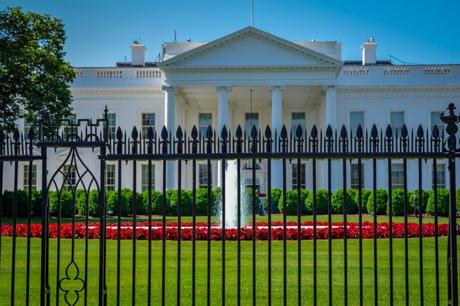
Construction on the White House started in 1792 and ended in in 1800. President Thomas Jefferson began his occupation in 1801 and established the building as more of a publicly accessible gathering location than as a private government premise. 217 years, and several national security incidents, later the White House is one of the most strictly restricted compounds in the world.[/caption]
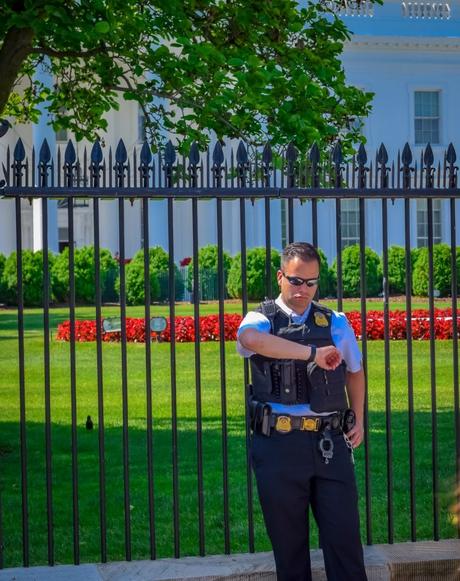
The White House is protected by some of the world's most advanced security protocols which include, but are not limited to: highly trained Secret Service agents, thorough background checks for all visitors, Norwegian Advanced Surface to Air Missiles, and this guy.[/caption]
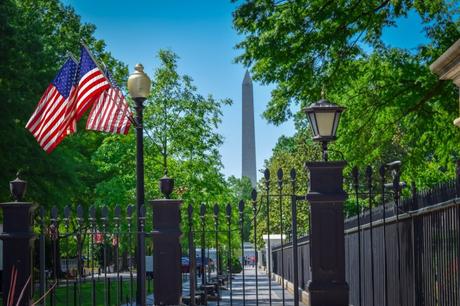
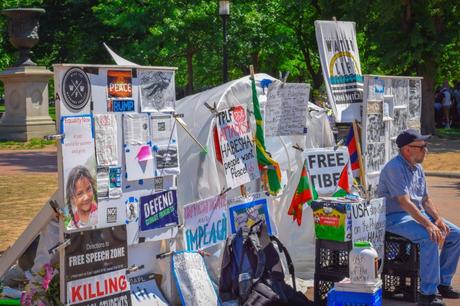
A lone protester set up camp at one of the few accessible spots near the White House. A recently inaugurated Donald Trump had left for the Middle East the day before on his first international trip as President. His absence could account for the lack of demonstrations during my visit.
Smithsonian National Museum of Natural History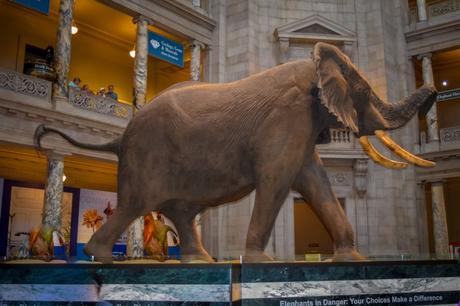
I was drawn to the National Natural History Museum by my lifelong intrigue for historical relics as well as the free admission. After passing through a security checkpoint that makes TSA screenings feel like spa treatments, I entered the museum, not anticipating how enormous it would be inside. This Elephant is the centerpiece of the lower level.
The National Natural History Museum was one of the first Smithsonian buildings on the National Mall when it opened in 1910. There are nearly 130 million specimens housed in the museum that range from plants to animals, fossils to meteorites, and human remains to cultural artifacts. Approximately 185 natural history scientists work at the museum, some in areas that can be observed by guests.
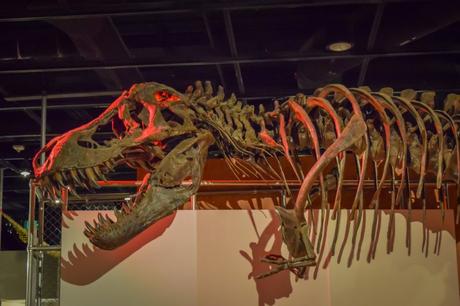
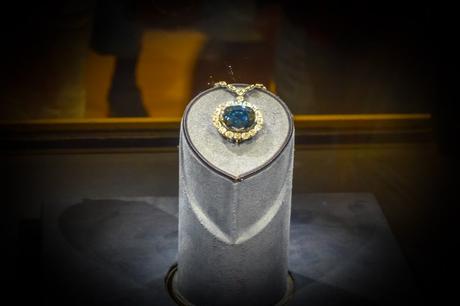
The Hope Diamond is one of, if not the, most recognizable jewel in the world. Found in India, cut in France, stolen in England, purchased in America, and featured under a different name in the film Titanic, the Hope Diamond gained a lot of mileage before finding it's way to the National Natural History Museum in 1958. Some estimate the value of the 352-year-old diamond at around $250 million.[/caption]
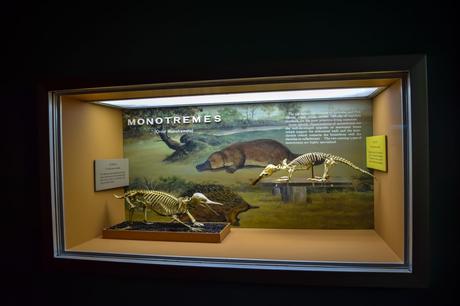
The National Natural History Museum is home to the most extensive collection of vertebrate specimens in the world. Animals like these monotremes are part of an exhibit in the Behring Hall of Mammals. The renowned design firm Reich+Petch present samples in a modern art/minimal environment style.[/caption]
National Museum of African American History and Culture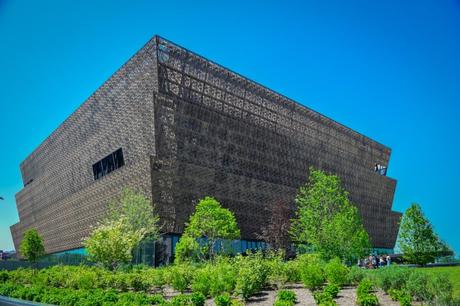
The NMAAHC is the youngest of the Smithsonian museums. Ideas, plans, and concepts for a memorial to African American history and achievements had been pursued and rejected since 1915, often with cost as the official reason. It wasn't until 2003 that the National Museum of African American History and Culture received congressional authorization. Thirteen years later the NMAAHC opened to the public.[/caption]
The Treasury DepartmentIn the year 1800, the nation's capital moved from Philadelphia, PA to what is now Washington D.C. When government employees first arrived, the Treasury Department building was the only one that was constructed entirely and fit for occupation. After several fires and reconstructions, the building still stands as one of the oldest in D.C.[/caption]
Vietnam Veterans MemorialAfter a short rest at my hotel, I took a cab back to the National Mall where I found the Vietnam Veterans Memorial. This bronze statue depicts three soldiers looking intently at the memorial wall.
The Three Servicemen is a bronze statue of three soldiers; one Hispanic, one African-American, and one Caucasian. It was designed by Frederick Hart to complement the memorial wall and was unveiled on Veterans Day, 1984.
Albert Einstein Memorial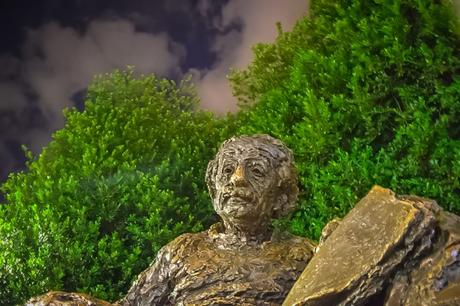
The Albert Einstein Memorial sits at the southwest corner of the grounds of the National Academy of Sciences, holding a manuscript engraved with three of Einsteins most well-known equations.[/caption]
The massive statue sits on a circular granite dais embedded with over 2,700 metal studs. Each of those studs represents the location of planets, asteroids, the sun, the moon, and other astronomical objects at the time of the memorial's dedication on April 22, 1979. Three of Einstein's most famous quotes can be seen engraved along the back of the bench.[/caption]
Lincoln MemorialThe Lincoln Memorial was the last item on my list of sites to photograph in Washington, D.C. and the one to which I was most looking forward. Its location and relation to the surrounding monuments make the Lincoln Memorial a perfect site-seeing hub. The lights in this part of the National Mall make it ideal for night time photography.
One of the most recognizable monuments in Washington D.C., the Lincoln Memorial was dedicated in 1922 and has since remained a major tourist attraction. The memorial has 36 columns that represent the states of the Union at the time of Lincoln's death, and inscriptions like the one pictured above appear throughout each chamber.
Arguably Lincoln's most important speech, the Gettysburg Address is inscribed on an inside wall. His second inaugural address, as well as other famous words, adorn the inside of the facility.
The Lincoln Memorial sits directly across the reflecting pool from the Washington Monument. Pictured above is the view from the steps that lead to the giant statue of President Lincoln gazing out at the obelisk. I took a few minutes to thoroughly absorb this scene before bidding farewell to the Nations Capitol. It had been a long but rewarding day.
